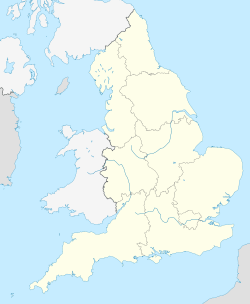Manduessedum facts for kids
| Location | Mancetter, Warwickshire, England |
|---|---|
| Region | Britannia |
| Coordinates | 52°34′01″N 01°31′12″W / 52.56694°N 1.52000°W |
| Type | Fortification and settlement |
| History | |
| Founded | 50 |
| Periods | Roman Imperial |
Manduessedum was an important place in ancient Roman Britain. It started as a Roman fort and later grew into a small town. You can find its remains near the modern village of Mancetter in Warwickshire, England. It's also close to the town of Atherstone. The name 'Manduessedum' comes from old Roman and Celtic words. It might mean something like 'chariot place', but the exact meaning isn't fully clear.
Contents
Manduessedum: A Roman Fort
The Roman fort at Manduessedum was built around the year 50 AD. It was placed along Watling Street, an important Roman road. The fort's job was to guard where the road crossed the River Anker. This was a key spot for travel and trade.
The Battle of Watling Street
A very famous battle might have happened near Manduessedum. This was the Battle of Watling Street in 60 or 61 AD. It was the final fight of Boudica, a brave queen who led a rebellion against the Romans. Her British forces fought against the Roman general Suetonius Paullinus. Sadly, the British were defeated in this major battle.
The Fort's Short Life
The fort at Manduessedum didn't stay a military base for very long. After about 70 AD, there isn't much evidence of Roman soldiers living there. It seems the fort was used for only about 20 years.
Manduessedum: A Roman Town
Even after the fort closed, Manduessedum became an important place for everyday people. It grew into a busy civilian settlement. This means it was a town where ordinary Roman citizens and Britons lived and worked.
Pottery Making Center
Manduessedum was especially famous for making pottery. They mostly produced special mixing bowls called Mortaria. These bowls were used for grinding food. Archaeologists have found the remains of up to 70 pottery kilns in the area. These kilns were like big ovens used to bake the clay pots. This shows that pottery making was a huge industry here.
Other Discoveries
Besides the kilns, the remains of a Roman villa have also been found. A villa was a large country house, often owned by a wealthy Roman. Today, the area around Manduessedum is protected as a scheduled monument. This means it's an important historical site that must be preserved.


